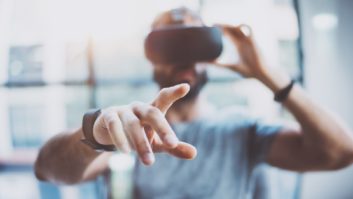
The tremendous popularity of Pokémon Go (20 million daily users in the U.S. alone) is driving gamers out in droves to capture creatures in a whole host of locations and essentially showcasing what augmented reality can do. AR, which superimposes visuals, data, and virtual objects (such as Pokémon) on the viewer’s real environment, is viewed by many analysts and market watchers as potentially more useful than its glamourous cousin, virtual reality, especially since it can be activated using just a smartphone, rather than a headset that tethers the user to a particular environment.
One of the main effects of Pokémon Go has been to draw attention to existing AR apps, that build on current smart device functions — namely GPS and cameras. This works because the cameras allow for a view the environment in real time, which can be “augmented” from the user’s viewpoint. AR’s potential has been recognized by retail for quite a while. For example Legos introduced an AR app a full six years ago, allowing customers to hold a box in front of an in-store monitor and see what the finished model would look like.
More recently, the online store Wayfair launched Wayfair view, allowing shoppers to superimpose potential purchases on their own space to see if the items would fit and h ow they would look. Ikea has an AR catalog app, that lets shoppers use their smartphones to virtually furnish their rooms with items from the catalog. Other apps allow customers to virtually try on shoes and clothes and in some cases share photos with their social networks.
Retailers can also use AR to enhance and tailor the customer experience. Using a specialized store app, customers can get more information about a product, its availability and potential discounts or promos. By including AR components to store displays, retailers are able to profit from the fact that their customers are often more preoccupied with their phones than the merchandise right in front of them. Apps can also direct customers to particular items, and provide a guided map to the specific shelf, something that is tremendously useful in large stores.
Social apps also allow for customer interaction. Yelp launched its AR Monocle in 2009 showing restaurants, stores, along with their crowd-sourced reviews. The online rating platform recently launched a filter showing users when Pokémon are nearby, thus driving interest in businesses that are in the Pokémon zone.
AR began as a tool to help large industry. The term “augmented reality” was coined in 1990 at Boeing before smartphones even existed, and was a software to replace maps and schematics for factory workers and required high-tech headgear to utilize. But today, it has taken little more than a month to normalize the behavior of pointing a smartphone at something to see new information, or toy creatures to capture. In Brazil at the 2016 Summer Olympics, athletes were concerned that the Pokémon Go app was not available in Rio, but the game developers launched in South and Latin America right as the games were starting.
Pokemon’s popularity, which has translated into consumer acceptance and interest in AR will drive greater adoption of existing AR platforms and Apps as well as innovation in AR software, hardware and services, all of which will benefit retailers. The world has essentially be thrown open for new AR apps creating a tremendous AR App development boom. The number of AR apps is growing every day and the size of the AR app market alone will reach $2.4 billion in revenues by 2019. It is as if the world woke up to a new reality, not just full of “Pocket Monsters,” but of access to digital information in real time on a scale never before possible.
Chris Carmichael, is the founder and chief creative architect of Ubiquity, a technology and media company in the AR/VR and mixed reality space. Ubiquity produces augmented-reality content in its studios in Irvine, Calif., as well as provides intellectual property for developers through the company’s labs.













